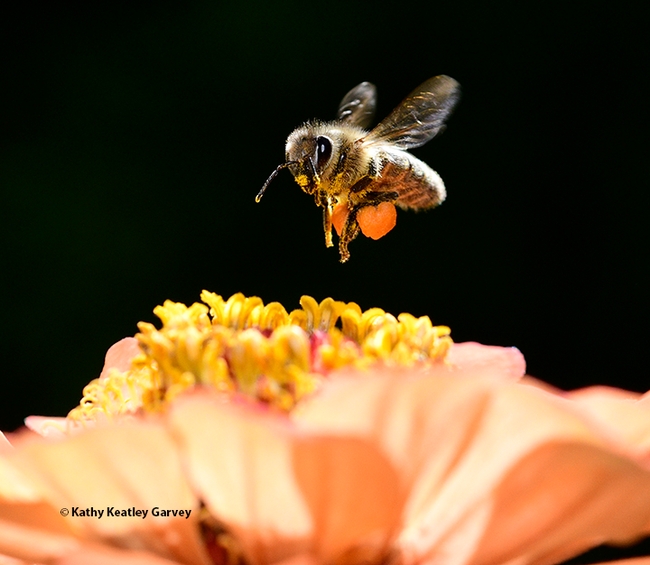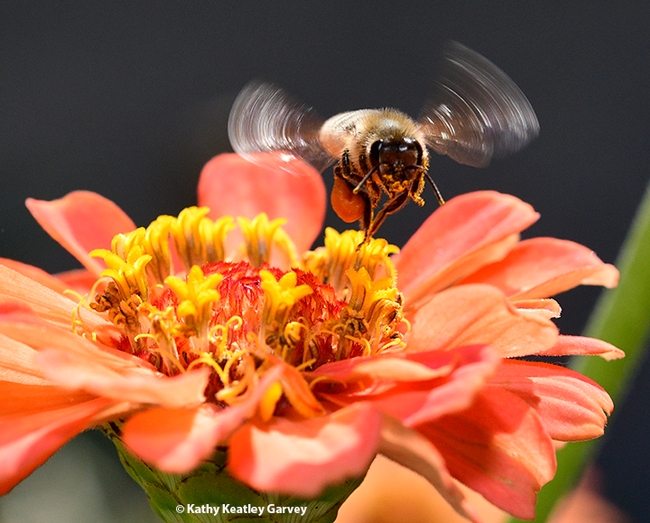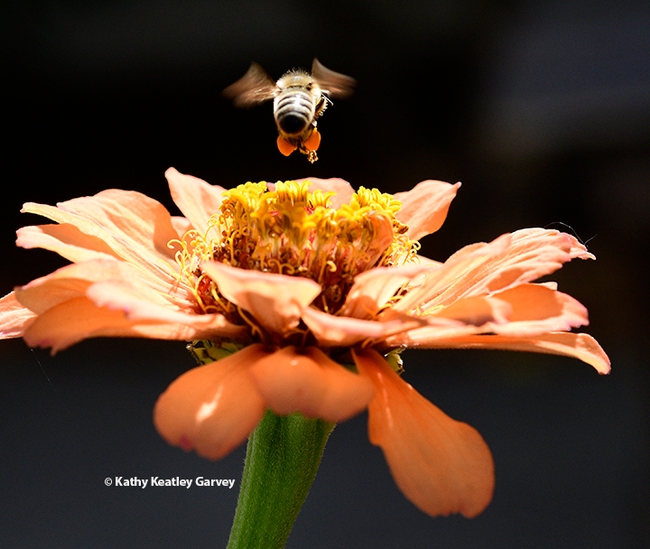
It's Labor Day, but honey bees aren't relaxing. They're out in force collecting nectar, pollen, water and propolis.
Ever seen them weighted down with huge pollen loads?
They seem to have "Herculean strength," don't you think? That's what Norman "Norm" Gary, emeritus professor of entomology at the University of California, Davis, writes in his book, Honey Bee Hobbyist: The Care and Keeping of Bees, considered the bible for hobby beekeepers.
"Ten pollen foraging trips a day is par for the typical pollen forager," Gary relates. "When pollen is abundant, a bee can gather a full load in as little as 10 minutes by visiting several dozen flowers...When all factors are favorable, bees from a strong colony can collect many thousands of loads a day. Incidentally, when.beekeepers describe their colonies as strong. they really mean populous--even though bees as individuals seem to have Herculean strength, flying with loads nearly as heavy as their body weight."
In an email, he wrote: "A worker honey bee weighs about 100 milligrams and are reported to be able to carry about 75 milligrams…approximately 75 percent of is body weight!"
Gary, now 90, served as a member of the UC Davis faculty from 1962-1994. He has kept bees for 75 years, starting at age 15.
As an aside, you may know him as not only a professor, scientist, musician, and author but one of the world's most incredible professional bee wranglers. He used to wear full-body bee suits and play the b-flat clarinet. (See Bug Squad blog of Nov. 30, 2016). He once trained bees to fly into his mouth to collect food from a small sponge saturated with his patented artificial nectar. He holds the Guinness World record (109 bees inside his closed mouth for 10 seconds) for the stunt.
Norm Gary knows bees.
Attached Images:

A honey bee packing a huge load of orange pollen from zinnias as it heads for another blossom in a Vacaville garden. (Photo by Kathy Keatley Garvey)

A honey bee, its wings a'buzzing, slips through the petals of a zinnia. (Photo by Kathy Keatley Garvey)

All finished here. Next zinnia here I come! (Photo by Kathy Keatley Garvey)